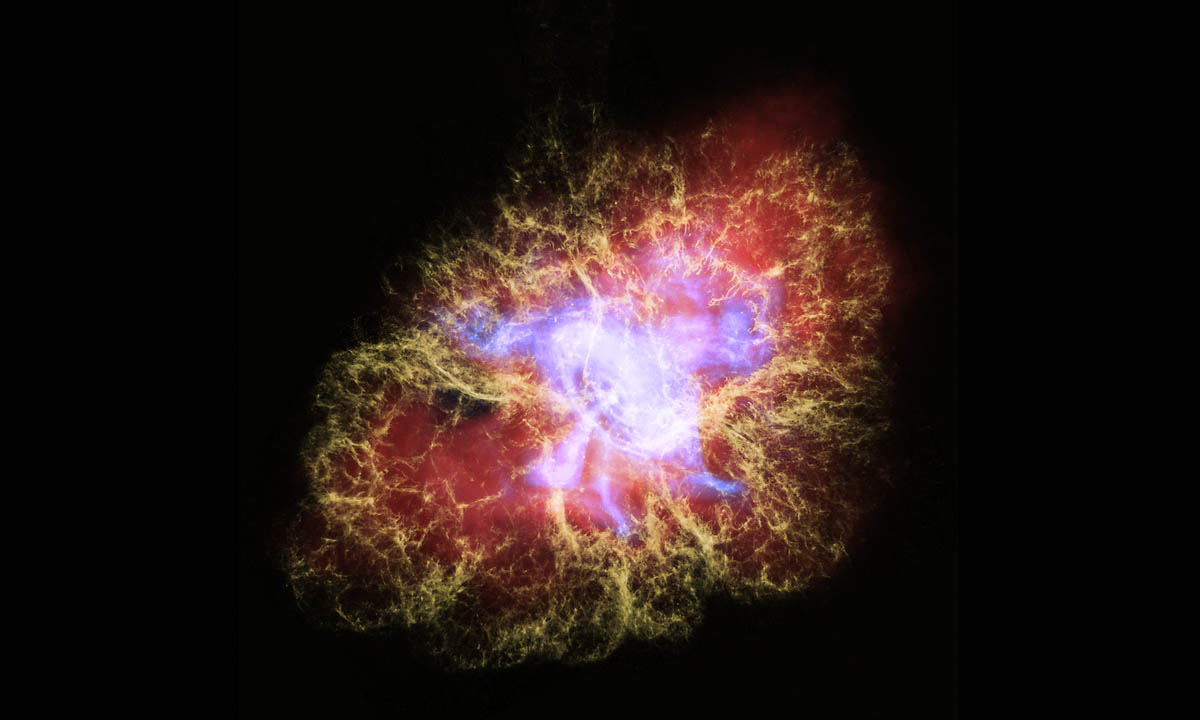This new multiwavelength image of the Crab Nebula combines X-ray light from the Chandra X-ray Observatory (in blue) with visible light from the Hubble Space Telescope (in yellow) and infrared light seen by the Spitzer Space Telescope (in red). This particular combination of light from across the electromagnetic spectrum highlights the nested structure of the pulsar wind nebula. The X-rays reveal the beating heart of the Crab, the neutron-star remnant from the supernova explosion seen almost a thousand years ago. (NASA, ESA and J. DePasquale (STScI) and R. Hurt (Caltech/IPAC))
Home This new multiwavelength image of the Crab Nebula combines X-ray light from the Chandra X-ray Observatory (in blue) with visible light from the Hubble Space Telescope (in yellow) and infrared light seen by the Spitzer Space Telescope (in red). This particular combination of light from across the electromagnetic spectrum highlights the nested structure of the pulsar wind nebula. The X-rays reveal the beating heart of the Crab, the neutron-star remnant from the supernova explosion seen almost a thousand years ago. (NASA, ESA and J. DePasquale (STScI) and R. Hurt (Caltech/IPAC)) This new multiwavelength image of the Crab Nebula combines X-ray light from the Chandra X-ray Observatory (in blue) with visible light from the Hubble Space Telescope (in yellow) and infrared light seen by the Spitzer Space Telescope (in red). This particular combination of light from across the electromagnetic spectrum highlights the nested structure of the pulsar wind nebula. The X-rays reveal the beating heart of the Crab, the neutron-star remnant from the supernova explosion seen almost a thousand years ago. (NASA, ESA and J. DePasquale (STScI) and R. Hurt (Caltech/IPAC))
This new multiwavelength image of the Crab Nebula combines X-ray light from the Chandra X-ray Observatory (in blue) with visible light from the Hubble Space Telescope (in yellow) and infrared light seen by the Spitzer Space Telescope (in red). This particular combination of light from across the electromagnetic spectrum highlights the nested structure of the pulsar wind nebula. The X-rays reveal the beating heart of the Crab, the neutron-star remnant from the supernova explosion seen almost a thousand years ago. (NASA, ESA and J. DePasquale (STScI) and R. Hurt (Caltech/IPAC))


